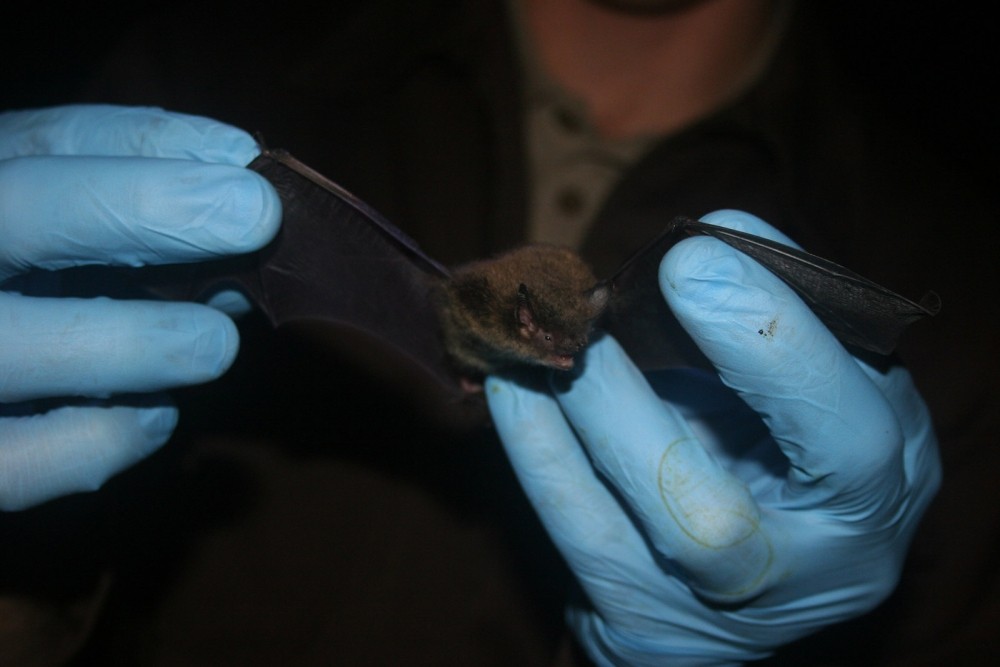Yesterday evening, a bat found its way into the Northern Woodlands building and flew into my office. It careened around the room for several revolutions and then (as far as I know) found its way outside again. And no, my first reaction was not nature appreciation. A confused bat in a closed space is unnerving, but now that I’m back from under my desk, I consider the encounter as a kind of blessing. I hadn’t had an opportunity to closely watch a healthy bat for more than a decade, and this one appeared to be thriving.
In 2008, I had the opportunity to tag along with Vermont Fish and Wildlife Department biologist Scott Darling and his colleagues on a trip to net bats at the Elizabeth Mine in Strafford. This was during late summer mating season; I remember standing near a mine entrance in a flyway hemmed in by saplings. The tiny creatures pelted through the air all around me, some mere inches from my face. The closest experience I’ve had to this one was as a kid, snorkeling through a school of minnows; they limned my body, reacting to my movements in microseconds, close but never making contact.
Both of these experiences had a magical quality, but the memory of the bats is saddening, too, because in that year we were on the precipice of a population crash due to white-nose syndrome. Even then, the signs were grim. According to my notes, Scott and his team netted 95 bats that night; that sounds impressive now, but in previous years, they had netted hundreds.
My other takeaway from that night – a happier one - was a deep appreciation for the people who were doing this monitoring work. I had recently returned to the Northeast as a full-time resident, and at the time was just waking up to the diverse community of people who work to care for the region’s natural resources. Federal and state wildlife agencies are an important part of that community, and I think it’s fair to say that most people have no idea how many important services they provide. Wildlife officials often appear in the press in the context of hunting season or wildlife-human conflicts, but there’s so much more that their departments handle, from work to help private landowners promote wildlife habitat (see for example, our previous blog on loons) to field research on non-game species. And their responsibilities seem to keep expanding, even as budgets aren’t so flexible.
Here’s an excerpt from my 2008 notes, which reflects both the painstaking work of the team that night and their frugality:
The process was surprisingly low-tech: a small kitchen-type scale, an open-ended plastic cylinder for holding the bats still while they were weighed (on other occasions, they’ve used empty toilet rolls), calipers for determining forearm length, and two “light boxes” of the elementary school project genre – shoe boxes with wax paper stretched on top, containing within battery operated lights. This last item provides a gentle way for team members to illuminate the bats wings from below, helpful for assessing the extent of scarring on the wings…
If you’d like to learn more about the gamut of wildlife agency responsibilities and funding challenges, check out this article by Tovar Cerulli from our Autumn 2013 issue. For more information on white-nose syndrome and ways to help bats, including a chance to see monitoring work in action, check out this video (Battle for Bats), as well as this site maintained by the interagency White-Nose Syndrome Response Team.


